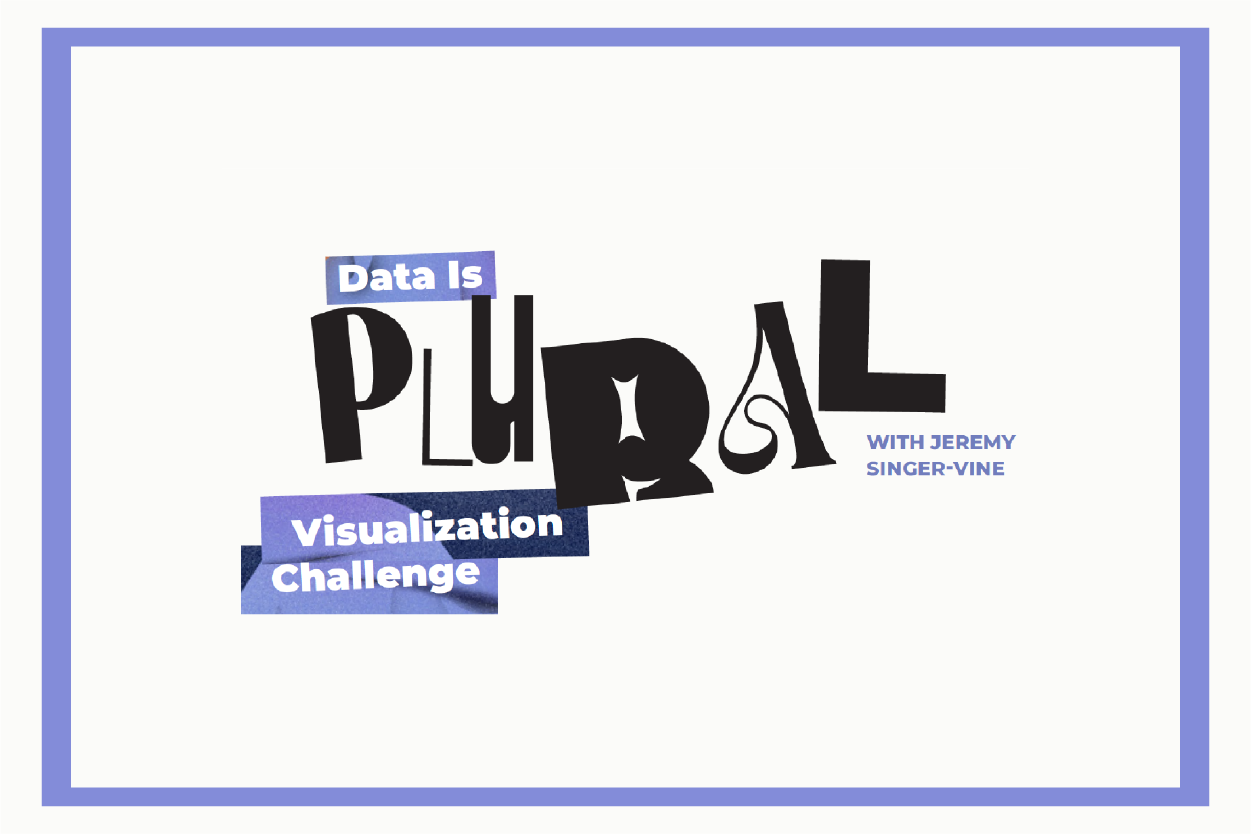This article originally appeared in Issue 2 of Nightingale Magazine.
In Nightingale Magazine Issue 1, we launched the Data Is Plural visualization challenge with Jeremy Singer-Vine, creator of the Data Is Plural newsletter. (Check out the challenge submissions here.) We’re pleased to announce—it’s back for Issue 2!
The Challenge
We’re a community of data visualizers, so let’s do what we do best— visualize data! Explore the selected dataset, find an interesting angle or insight, and create a visualization using the tool of your choice. Infographics, data stories, data art… you have permission to get creative.
Submission
There are no prizes here—this is simply an opportunity to practice our craft— but we would love to see what you create! Send a high resolution image (300 dpi) of your visualization and a description of no more than 150 words to nightingale@datavisualizationsociety.org by FEBRUARY 15, 2023. Submissions may be featured online or in print.
About the Dataset, from Jeremy Singer-Vine
Jeremy Singer-Vine is the publisher of Data Is Plural, a weekly newsletter that highlights useful and interesting datasets. From 2014 to early 2022, he served as the data editor for BuzzFeed News.
Few people have captured the spirit of creativity-for-all more than Bob Ross, who hosted The Joy of Painting on US public television for more than a decade in the 1980s and ‘90s. Whether you love his idyllic landscape paintings or hate them, it’s hard to deny Ross’s unique place in American cultural history. (The National Museum of American History appears to agree: Its collection includes several of his paintings, as well as brushes, a palette, and an easel Ross used on set.) So the Nightingale editors and I thought his oeuvre would be a fitting subject for this issue’s inspiration-themed visualization challenge.
We’ll focus on two complementary datasets. The first comes from TwoInchBrush.com, by way of data scientist Jared Wilber, who scraped the Ross-centric website’s catalog into a simple CSV file. Each row represents a Joy of Painting episode, of which there were hundreds. The columns indicate the title of the artwork that Ross (or the occasional guest) taught viewers to paint, the names and hex codes of the colors used, as well as YouTube and image links.
The second, published by Walt Hickey at FiveThirtyEight, focuses on the paintings’ imagery rather than colors. For each finished canvas, Hickey determined whether it met dozens of criteria. Was there a tree? What about multiple trees? Conifer or deciduous? How about clouds? Hills? Snow? Mountains? The categorizations also refer to non-imagery elements, such as whether the episode featured a guest and what shape of frame the painting used.
For the Nightingale challenge, feel free to use the first dataset, the second, or both. If you don’t know where to start, it may help to recollect some of Ross’s most famous words (perhaps in his soothing baritone): “We don’t make mistakes. We just have happy accidents.”









